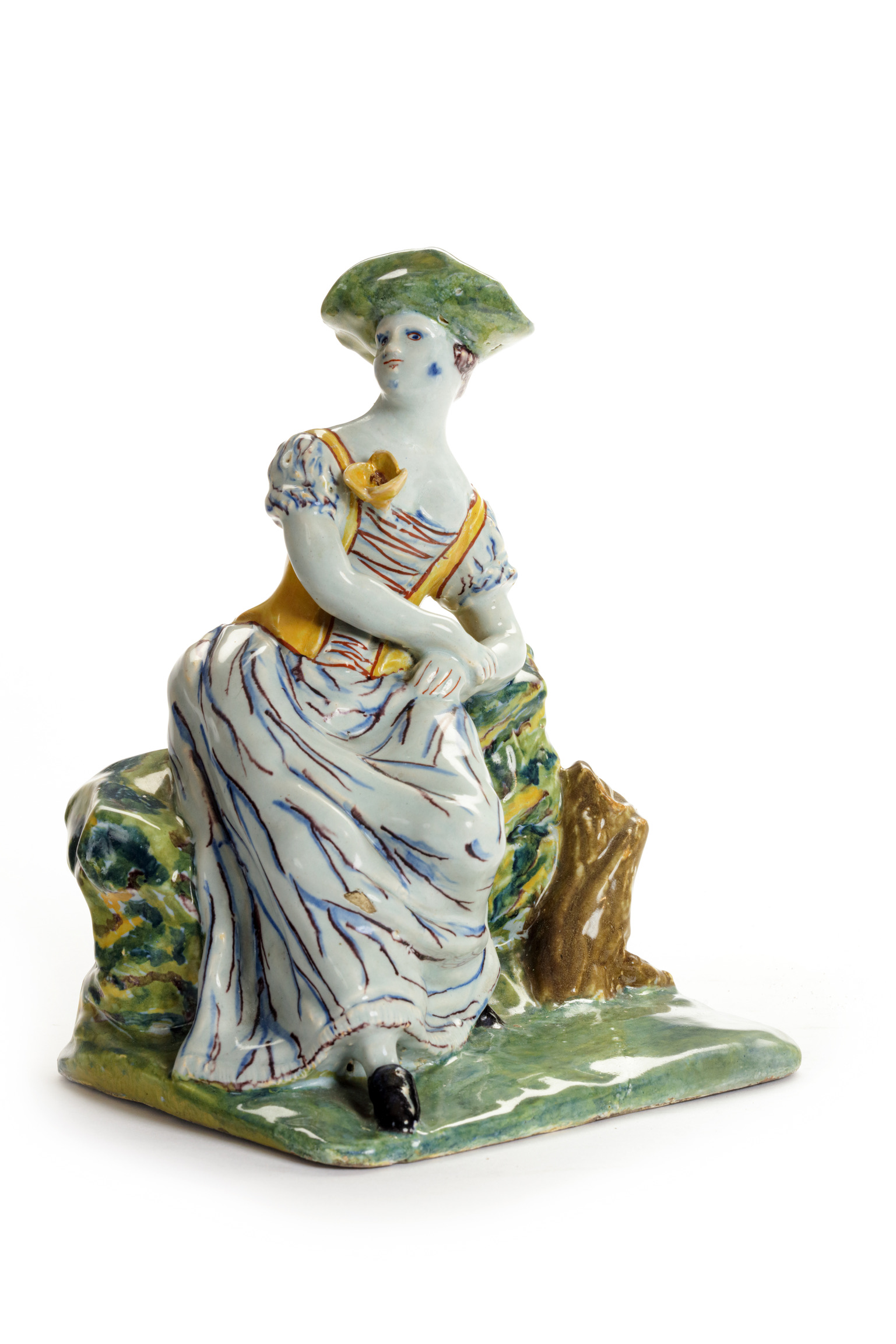![]()
Images on this website are licensed under a
Creative Commons Attribution-NoDerivs 3.0 Unported License.
OBJECT
D2356. Polychrome Figure of a Seated Lady
Delft, circa 1765
Marked with an axe in blue for De Porceleyne Byl (The Porcelain Axe) factory
The figure wearing a green hat on her brown hair, and a blue and iron-red delineated white dress, a yellow bodice and manganese shoes, modeled seated and leaning on a green, yellow and brown marbleized rock, near a tree trunk, on the green grassy rounded square base.
DIMENSIONS
Height: 22 cm. (8.7 in.)
PROVENANCE
Frederik Muller & Cie, Amsterdam, 26th-29th November 1907, lot 423;
Frederik Muller & Cie, Amsterdam, 20th-24th June 1916, lot 566
NOTE
Delftware figural groups like the present seated lady were probably influenced by Meissen examples when the exorbitantly decorative rococo style swept through Europe in the eighteenth century. The style began in France during the reign of Louis XV, and quickly spread to other parts of Europe, particularly Bavaria, Austria, Germany and Russia. The style was a reaction against the more formal and geometric style of Louis XIV. Although it is not considered a Dutch phenomenon, the rococo style was integrated into architecture and interiors in the Netherlands in the second half of the century.
With its playful and witty themes, rococo rooms were designed as a total work of art with elegant and ornate furniture, ornamental mirrors, and tapestry complementing architecture, reliefs, and wall paintings. The rococo interior was adorned with numerous ceramic objects, which were displayed on console tables, dining room tables, in showcases or on pedestals. These ceramic objects may have included Delft faience, or porcelain made in Sèvres or Meissen, centers that produced many small scale works in series.
The Delftware potters and painters experimented with rococo ornamentation to both break with the oriental models and to follow the new German and French styles. The German influence originated after a considerable amount of Meissen porcelain was imported to the Netherlands. The competition from Meissen, whose products were specifically designed for the European elite, first caused trouble for the Delft industry. However, the Seven Years’ War (1756-1763) interrupted the production of many German and French factories, which caused a severe reduction of the porcelain available in Holland and an influx of emigration of German and French craftsmen into the Netherlands. The Delft factories thus rose to meet the demand for the popular rococo ceramics.
Consequently, a tremendous amount of human and animal figures of various sizes and models were produced by the Delft masters in order to satisfy a range of tastes. While these playful objects embrace the rococo spirit, they equally exude a characteristic Dutch charm and insouciance. Like in Germany, the human and animal figures of Delft were exhibited in showcases or on pedestals.









